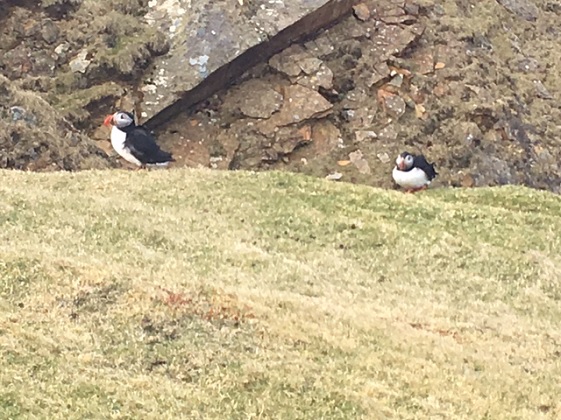Whiskey, nature and propofol: Anaesthetics in Shetland, Zoe Honniball, University of Warwick, 2017
My elective was spent in Gilbert Bain Hospital, the sole hospital on the United Kingdom's most northerly outpost. The Shetland Isles are a group of 100 islands, with an eclectic history involving Scandinavian rule, Second World War spy boats and oil drilling.
The 22,000-strong population vary from poorer farmers to multi-millionaire fishermen. However, as with the rest of the NHS, no matter what their background they can receive high-level routine and emergency care.
I knew from previous reports that there would be plenty of opportunities as time was split between theatre lists, pain clinics and pre-hospital with paramedics.
Theatre diversity
Through out my studying, I had attended many theatre lists but none of them prepared me for the diversity I saw in one day in Gilbert Bain. On one day the operations ranged from a finger amputation to a breast lump excision to colonoscopies.
This diversity showed me the adaptability required in anaesthetics but also the opportunities that can be found within theatres.
One of my main aims for my elective was to improve my practical skills. Through out my time in Shetland, I significantly enhanced my airway skills in both adults and children. As the team was small and these were the only theatres, I was able to observe more complex intubations including paediatrics and rapid sequence intubation, and improve my paediatric bag valve technique under consultant supervision.
This next level of complexity was challenging but the feeling was amazing when I could see how much I was improving. As well as airway management skills, I managed to practice and regain confidence in cannulation and trauma assessment.
Although a lot of my time was spent in theatres, I also managed to attend pain clinics and pain theatre lists.
With supervision I was given the chance to perform various procedures including caudal epidurals, facet joint injections and trigger point injections.
My interest in anaesthesia had been started when I saw the emphasis on practical skills, which I often excel at. However, I had not previously considered chronic pain management as something I would enjoy, but I found the sub-speciality incredibly interesting and rewarding.
Paramedic adventure
I spent my last day shadowing the paramedics as they responded to calls around the mainland. It was eye opening to witness the logistics of providing good pre-hospital care across so many islands.
One patient had been seen by the GP-cumparamedic with a suspicion of a stroke on Foula, an island a 20-minute boat ride away. The GP and ambulance driver transferred the patient across on the ferry where we met and sped them to A and E 30 minutes down the road.
By the time they had arrived at hospital it was two and a half hours since their symptoms had begun. However, the GP and ambulance crew managed to stabilise and manage the patient allowing full treatment to begin as soon as they reached resus.

The amazing part about being in Shetland was the ability to have exceptional one-to-one teaching in a breathtaking part of the country.
Ward round were paused to see killer whales in the harbour, puffins going about their daily business, and on a trip to Tesco, we walked past four seals basking on the rocks.
I will always remember the Shetland Islands as the place which confirmed my wish to pursue anaesthetics, and I hope to return in the future.
I would like to thank Dr Jacek Swierczewski and the anaesthetics team for making my time in Gilbert Bain so enjoyable and for getting me so involved. I would also like to thank the Association for their generous bursary which allowed to experience the incredible Islands.